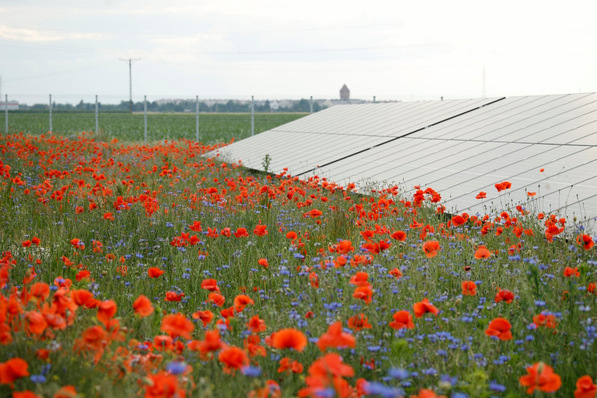The Elektrizitätswerke des Kantons Zürich (EKZ) have been operating a test solar plant on the Totalp near Davos since 2017. At an altitude of 2,500 metres, various solar modules were set up at different angles of inclination. The goal: The EKZ wanted to know how much yield the modules produce compared to systems in the lowlands and what the best angle of attack for the panels is.
Modules deliver significantly higher yields
Now the EKZ, together with the Zurich University of Applied Sciences (ZHAW), have analysed the measurement data from the test installation and published the results for the last five years. These show that compared to the comparative plant in the Central Plateau, all modules on the Totalp deliver significantly higher energy yields.
Albedo effect and no snow on the modules
The project partners attribute this, among other things, to the fact that they used bifacial modules. Due to the angle of attack between 60 and 90 degrees, they generate up to 60 per cent more yield at certain times. This in turn is due to the reflection of the snow.
See also: Swiss project developers plan ten new solar plants in the Graubünden Alps
However, the angle of attack is not only important to take advantage of this so-called albedo effect, but also to keep the modules free of snow. According to measurements, the loss due to snow cover was minimised to one to two per cent of the annual yield with these angles of attack, as the snow can slide off unhindered.
Compared to a solar plant on the Central Plateau, the researchers measured up to twice as high annual yields with around 50 per cent winter electricity. They were actually able to demonstrate up to four times more electricity production per module area on the test system in the winter half-year.
Further studies announced
In contrast to the Totalp test facility, the modules in large solar parks are usually arranged in rows one behind the other. The influence of different system configurations on the electricity yield is part of the further research with an additional pilot system on the Totalp. The project partners expect the results of these tests in spring or summer 2024.
Electricity also flows in winter
The EKZ will continue to operate both plants in Davos for another four years in order to obtain additional research results. But one thing is already clear: "Alpine solar plants make a significant contribution to ensuring that electricity also flows in winter and provides heat and mobility," says Raphael Knechtt, Head of Solar Business at EKZ.
Also interesting: PV mounting system fit for mountain refuge
The results from Davos now provide all investors in future alpine photovoltaic plants in Switzerland with valuable please notes on the potential electricity yield. The EKZ is currently using the various findings from the measurements for the planned Grengiols Alpine projects in the Valais or the planned Felsenstrom solar plant on Lake Walen. (su/mfo)








